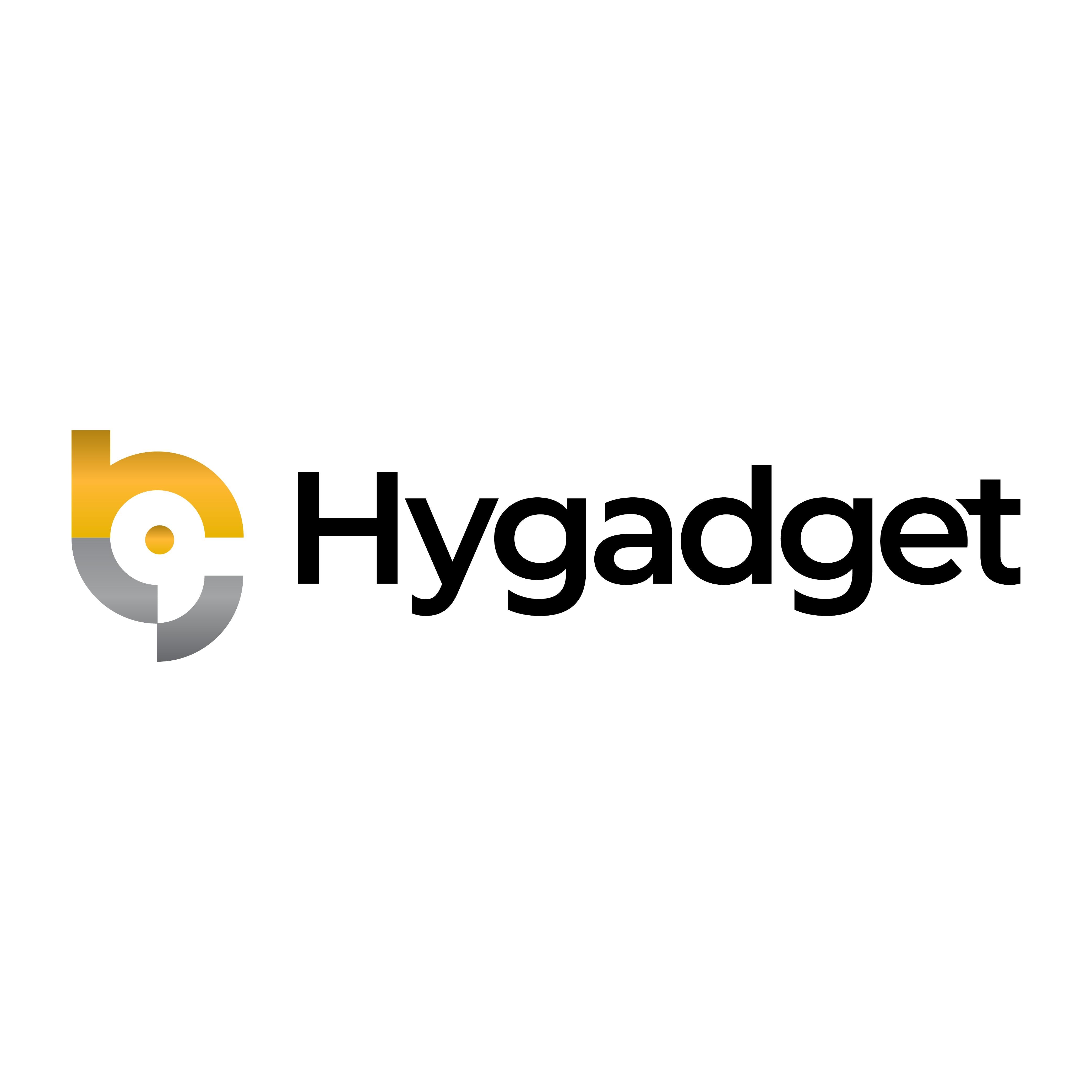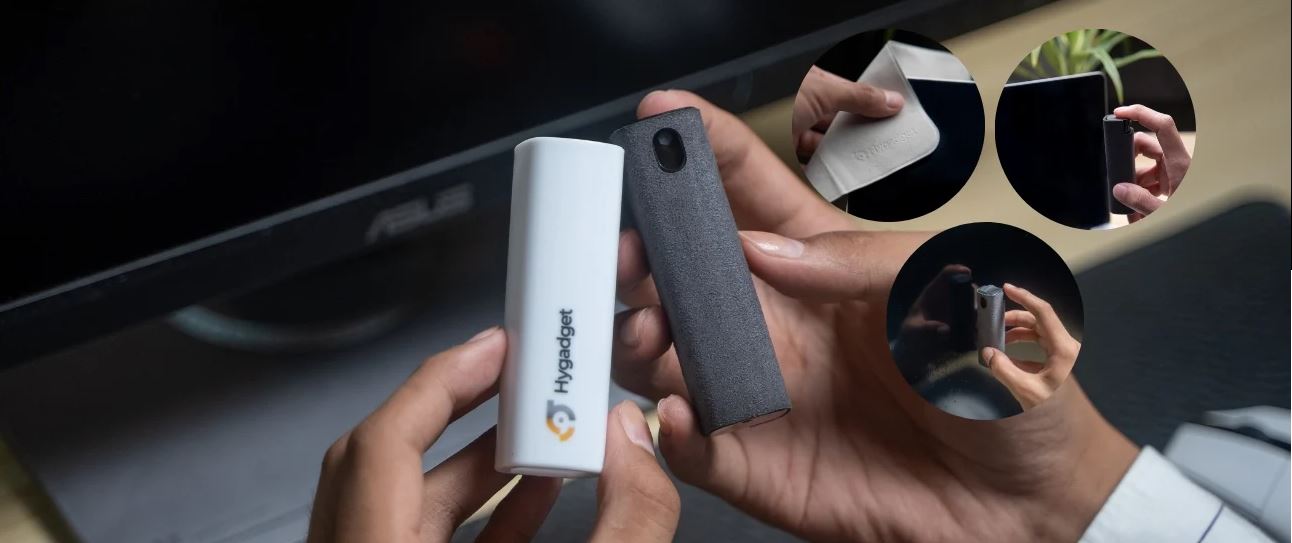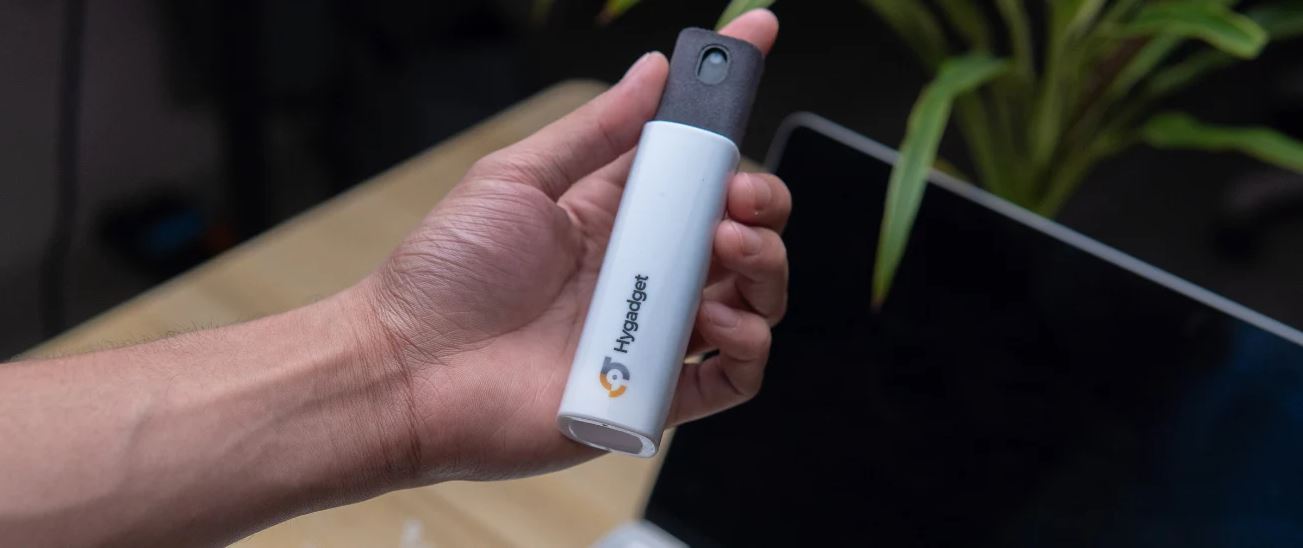Many think of cleaning their computer screen as a simple task but many of us fall into the common pitfalls of either using the wrong products or performing the incorrect techniques when cleaning their monitor displays.
In today’s discussion, we’ll guide you through how to maintain a pristine computer screen by elaborating on the top 10 cleaning mistakes to avoid during the cleaning process of your digital displays, so let’s dive right in.
1. Using Household Glass Cleaners
The temptation of grabbing the nearest bottle of household glass cleaner to clean fingerprints or smudges on your computer screens can be a costly one. Here’s why you should avoid household products such as glass cleaners:
Harsh Chemicals
Most household glass cleaners are formulated with ammonia or alcohol at concentrations that are way too harsh for your computer’s delicate protective screen coatings. While these chemicals are great for keeping your windows sparkling clean, they can strip away anti-reflective coatings on your screen and lead to permanent cloudiness or reduced visibility.
Residue and Streaking
Glass cleaners are only formulated to minimize streaking on glass but for most computer screens it can leave a filmy residue. This residue can attract more dust and dirt leading to a compounding problem that may require more frequent cleaning.
2. Applying Liquid Directly to the Screen
A common instinct with most computer monitor owners is that they might apply the cleaning liquid directly onto the surface. However, this approach can lead to the issue of ruining your display. Here’s why you should avoid this:
Risk of Liquid Damage
There are sensitive components on your computer screens that aren’t made to handle moisture. So when liquid is applied directly onto your screen there is a high risk that will seep into the edges or openings and potentially reach the internal electronic components. This can cause short circuits or malfunction.
3. Using Paper Towels
Choosing the correct cloth or cleaning material to clean your monitor is crucial to ensure your delicate screen surface isn’t scratched or incur other damages. Therefore you should avoid paper towels and here is why.
Although paper towels may seem soft, when you view them on a microscopic level you will find that they’re quite abrasive. The tiny wood fibers on paper towels can cause fine scratches on your computer screen. These scratches won’t immediately be noticeable but they can accumulate over time which can lead to permanently damaged screen surfaces.
4. Rubbing the Screen Too Hard
Although applying extra pressure might help remove stubborn stains more effectively, it’s not worth risking physical damage to your delicate computer screens.
Using excessive pressure to clean your monitor, especially ones with a thin design may not withstand high pressure. Rubbing too hard can distort the LCD crystals or damage the LEDs beneath the screen surface which can lead to pixel burnout or color distortion.
5. Cleaning While the Device is Powered On
Always power down your device before attempting any cleaning to avoid electrical safety risks. Cleaning your computer screen whilst on will increase the risk of electrical shock, especially if the moisture from the cleaning fluids comes in contact with the internal electronic components. This can be harmful to both the device and the user.
6. Ignoring the Manufacturer’s Instructions
One of the most overlooked yet important steps is reading and following the manufacturer’s instructions. These guidelines will help identify your device’s unique materials and technology, the consequences of ignoring them can lead to ineffective cleaning or can lead to permanent damage. Here’s why we suggest adhering to the manufacturer’s instructions:
Compatibility with Screen Coatings
Different types of computer screens vary in their types of protective coatings and some can be sensitive to certain chemicals and cleaning techniques. The manufacturer guidelines will specify which substances are safe to use and also ensure that you don’t advertently remove or damage their protective coatings.
Warranty Considerations
Warranties include clauses related to proper maintenance and care. If you use non-recommended cleaning methods then that can void these warranties which leaves you without support in the event of damage or malfunction.
7. Not Replacing Cleaning Cloths Regularly
While it may seem like you’re saving money to reuse the same microfiber cloth indefinitely, after an extended period amount of time these cloths can actually counteract your cleaning efforts. Here’s why we suggest keeping your cleaning cloth fresh:
Reduced Effectiveness
Cleaning cloth fibers eventually become damaged or matted, therefore diminishing their ability to attract and hold dust and debris. This results in less effective cleaning and leaves the computer display looking streaky or cloudy. According to Merry Maids, microfiber cloths can take up to 500 washings before being replaced.
Risk of Bacterial Growth
Damped or used cloths that are stored improperly can become breeding grounds for bacteria and mold. Therefore, continued usage over time can introduce these continents onto your screen which poses a hygiene risk and could cause unpleasant odors.
8. Forgetting to Wash Hands Before Cleaning
On the topic of hygiene, cleaning your computer screens starts long before you touch the screen or cloth it begins with your hand hygiene. Forgetting to wash your hands before cleaning your computer display can undermine your efforts by transferring more grime, oils, and bacteria onto the cleaning cloth which then makes contact with the screen. To understand how contaminated your hands can be, UofL Health article written by physicians mentions there are between 10,000 and 10 million bacteria on each of your hands.
9. Neglecting Anti-Static Measures
Incorporating anti-static measures is one issue we don’t think about but will help keep our computer monitors cleaner for longer. Static electricity can turn your screen into a dust magnet which calls for more frequent cleaning. This issue can usually be resolved by using anti-static wipes or sprays.
10. Neglecting Regular Maintenance
Many computer monitor users wait until there is a significant amount of dirt, smudges, or dust before cleaning their screens out of laziness or an attempt at trying to be efficient in cleaning their digital displays.
A consequence of this is that if you allow dirt or debris to sit on the screen long enough, this can lead to permanent stains. Certain contaminants, especially acidic or oily substances coming from fingerprints, food residues, or beverage spills can etch the screen’s coating which can also do permanent damage.
The Right Computer Screen Cleaning Kit For You
It’s important not to overlook the quality and specificity of the cleaning tools you use. The Hyscreen Kit screen cleaner is designed to address common cleaning challenges effectively. This kit comes with a gentle cleaning solution that avoids harsh chemicals so there is no risk of damaging the sensitive computer screen surfaces. It also includes a non-abrasive cloth and a polishing cloth to ensure the finished result is streak-free and spotless, providing the ultimate care for your devices while enhancing their longevity and performance.







